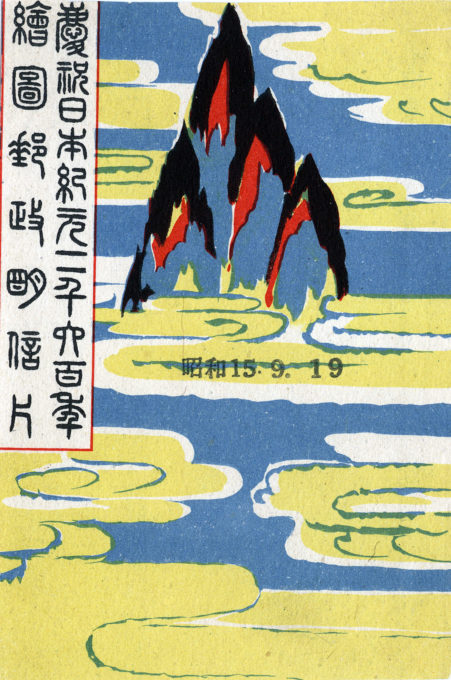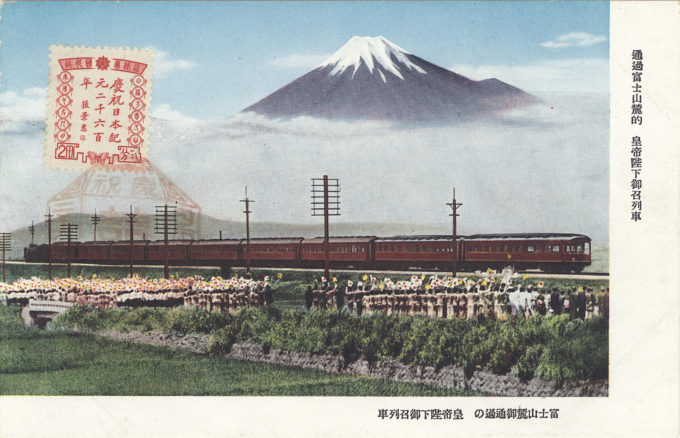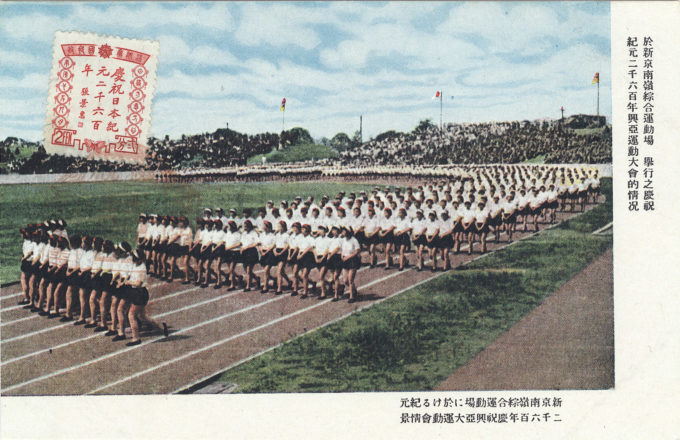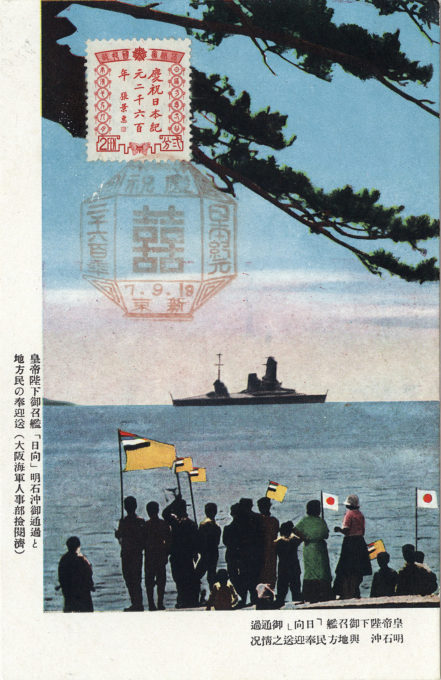
2600th Anniversary of the Founding of Japan commemorative postcard series, 1940. Cover and stamped issue date: 15.9.19 (September 19, 1940).Although National Foundation festivals and celebrations had been held every year since 1872, the 1940 version was to be a pumped-up version of what had gone on before. The Summer Olympics were slated to be hosted in Japan in 1940 and, at the same time, a lavish Tokyo Exposition was also being planned. However, both of these grand plans were dashed by Japan’s escalating war in China and also by the beginning of war in Europe in 1939. Instead, Japan decided to expend all of that pent up festival energy for the 2600th anniversary of the founding of Japan by the mythical Emperor Jimmu.
See also:
Exposition of Shining Technology (2,600th National Foundation Anniversary), 1940
This commemorative postcard series was among several released and sold in post offices throughout the Empire to celebrate the 2600th anniversary in 1940 of the “founding” of Japan by Emperor Jimmu. The stamps were issued in Manchukuo (Manchuria), Japan’s newest colony, and this particular series also commemorated the visit to Japan of Emperor Pu Yi, the “puppet” ruler of Manchukuo.
The intended release date was Sept. 18, 1940, but the original issue date was delayed one day because it fell on the ninth anniversary of the infamous Mukden Incident that precipitated Japan’s invasion of Manchuria. (Sept. 18 also clashed with the funeral of Prince Nagahisa who had recently been killed in an airplane crash in Mongolia.)

2600th Anniversary of the Founding of Japan, 1940. The Imperial train passes Mt. Fuji on its way from Tokyo to Kyoto-Nara.
“The year 1940 was the 2,600th anniversary of the accession of the first Emperor of Japan, Emperor Jimmu, in 660 B.C. The event was entirely mythical; yet, remarkably, the government of Japan was organized under a constitution of 1889 which accepted the event as historical. The unbroken succession of Emperors from Emperor Jimmu was the explicit basis for Japanese sovereignty.
“… It was one thing for the government of Japan to celebrate the anniversary of the mythical first Emperor; it was quite another for the historians of the day to acquiesce in the event. Scientific history entered Japan from the West in the late nineteenth century, and by 1940 it was clear to Japanese historians that the first histories [upon which the myth were based], Kojiki and Nihon Shoki, were not authentic records of the past.
“Japanese historians knew very well that the story of Emperor Jimmu was a concoction made by unknown people, and recorded as fact in those two works. Yet none of the great historians of Japan spoke a word to that effect. A single scholar at Waseda University, Tsuda Sokichi (1873-1961), had published works sceptical of the alleged facts of ancient history; for this he was brought to trial in 1941 on a charge of insulting the dignity of the imperial house.
“… As the twentieth century progressed and Japan’s leaders felt more threatened by the outside world, rationalism in historical and political studies was suppressed in favour of jingoistic incantation of the sacred nature of Japan.”
– Political Thought in Japanese Historical Writing: From Kojiki (712) to Tokushi Yoron (1712), by John S. Brownlee, 1991

The location is in Hsinking, Manchukuo, with students honouring and participating in the 2600 years celebrations for Japan.


